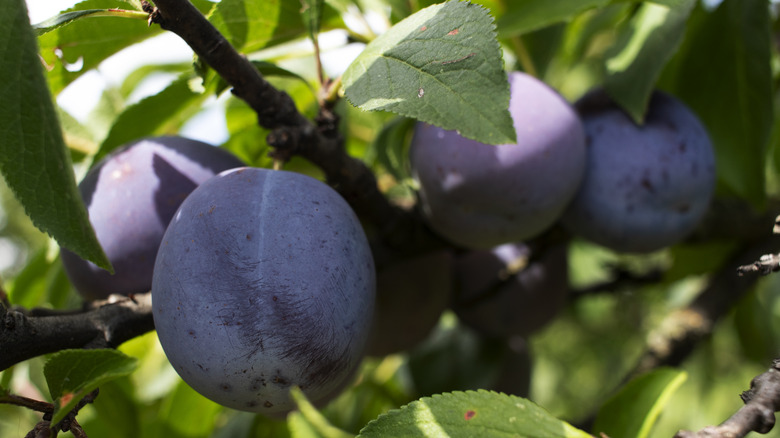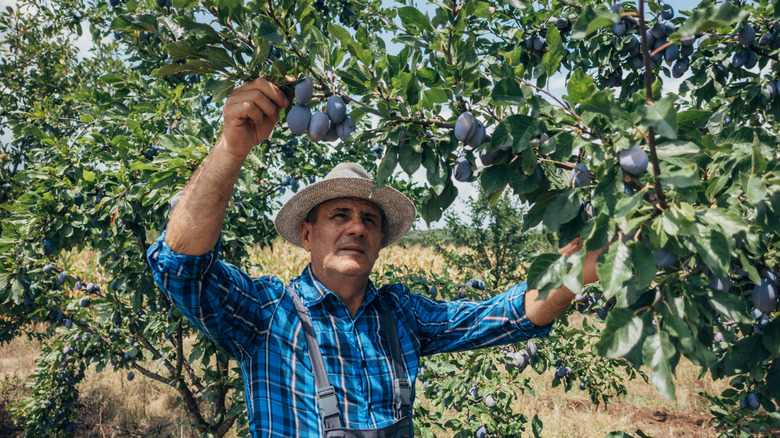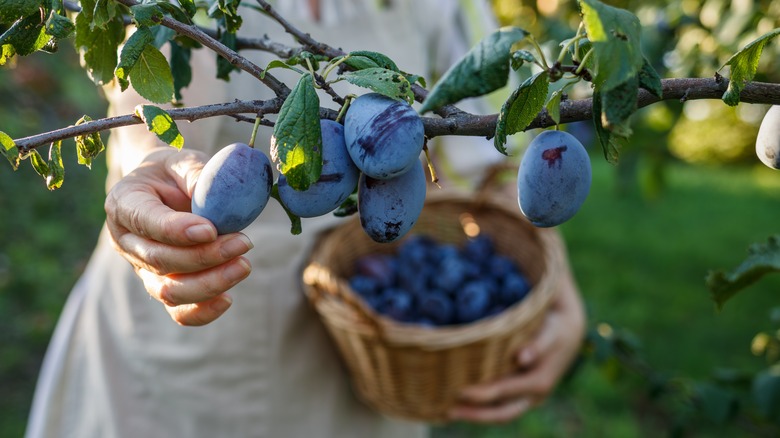Why This Plum Tree Variety Makes The Ideal Choice For A Small Garden Near Your Home
Have you ever wished you could grow your very own fruit tree? From springs filled with gorgeous flowers to summers made sweeter by fresh fruit at the ready, fruit trees offer a variety of benefits. However, when it comes to adding a fruit tree to a small garden, especially one that's near your home or patio, your dream mini orchard may seem out of the question. After all, nobody wants to dive headfirst into gardening only to find that the root system of their fruit tree caused damage to their concrete or foundation. Don't give up on your dream just yet, however. Instead, consider planting a plum tree variety that can be the ideal choice near buildings.
Dwarf fruit trees are also called miniature and patio fruit trees — and for good reason. Through the use of grafting, these trees are smaller than their regular-sized counterparts, making them easier to squeeze into small yards. Because of their root systems, they also coexist with buildings or structures better. But the best part? You aren't limited to only one or two types of fruit trees when looking at dwarf varieties. Instead, you can grow a range of dwarf fruit trees, including a variety of plum tree cultivars that are perfect for small gardens.
Dwarf plum trees are good for small yards near buildings
Dwarf plum trees are one of the best fruit tree choices for aspiring gardeners with limited outdoor space. Much of this has to do with their size. When you plant a standard plum tree, you can easily face an adult tree that's up to 25 feet tall. Not only is this difficult to accommodate if you have a smaller garden, but it can be challenging to prune and tend to your tree regularly. And when it's hard to control just how much your tree is growing through pruning and trimming, it can be hard to keep a handle on its root system, especially if you're dealing with a tree with aggressive roots. This can lead to trees whose roots may lift concrete or damage pipes.
Their smaller size is only part of the reason that dwarf plum trees can be a clever choice for small gardens near buildings, however. While the ease of care makes it easier to tame roots, the roots themselves are also often less aggressive than typical fruit trees. This has to do with the grafting process, as dwarf plum trees often involve grafting plum trees onto non-aggressive root systems. Because of their size and roots, you can also grow dwarf plum trees in containers. This gives you the benefit of having fresh fruit without any concerns of roots growing out of control and damaging the structures around your backyard.
How to grow dwarf plum trees
If a dwarf plum tree sounds like the right plant for your small garden, you may be wondering how you can grow this plant. There are many varieties of dwarf plum trees, and so care can vary. This is especially true when it comes to hardiness, as one variety, the 'Johnson' plum (Prunus domestica 'Johnson'), is hardy in zones 5 through 9, while another, the Natal plum (Carissa macrocarpa), requires much warmer temperatures to survive, ranging from zones 9 through 11.
Once you pick the right dwarf plum tree for your hardiness zone and climate, however, regular maintenance can become a bit more straightforward. These plants share certain care requirements with other fruit trees. For example, you want to ensure dwarf fruit trees have access to plenty of light each day, aiming for full sun for the best results. Providing enough sunlight is one of the easiest tricks for helping your fruit tree grow. You also want to avoid overwatering, which can easily become one of the biggest gardening mistakes you can make. This is especially true if you choose a potted route for your dwarf plum tree.


